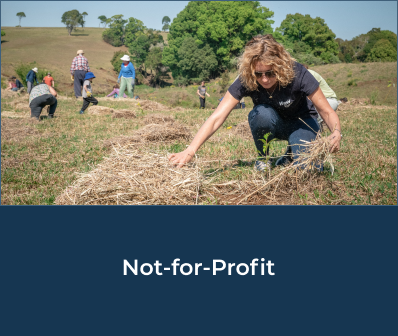Are you an owner of a corporation that needs to access corporate funds to pay for a major purchase or investment in the near future? If so, you should act quick as the upcoming changes to the income tax rules may render certain surplus distribution options obsolete starting January 1, 2024.
The Department of Finance introduced several amendments taking effect on January 1, 2024 to strengthen and modernize the General Anti-Avoidance Rules (“GAAR”) as part of the 2023 Federal Budget. Some of the more noteworthy modifications include changes to the definition of “avoidance transaction” and the introduction of the concept of “economic substance”, which will have a direct impact on the execution of certain surplus distribution strategies.
This article will discuss one of the most often-used options to make tax-efficient distributions, the potential tax savings that could be realized, and the impact that new legislation will have on the ability to implement these transactions after December 31, 2023.
How does this distribution option work right now?
Instead of distributing surplus from the corporations as an eligible or non-eligible dividend, the corporation would undergo an internal reorganization and realize a capital gain in the process. The resulting tax attributes generated from the capital gain allows the corporation to make distributions to its shareholders on a more tax-efficient manner than paying dividends (i.e. capital gains rate vs. dividend rates).
Illustration of Tax Savings
Take for example an individual shareholder resident in Ontario who owns shares of a Canadian-controlled private corporation (“CCPC”) with a fair market value (“FMV”) of $1,000,000, an adjusted cost base (“ACB”) of $100, and a paid-up capital (“PUC”) of $100. Also, assume that this shareholder is in the top tax bracket, meaning that the marginal tax rates in relation to eligible and non-eligible dividend income earned by the shareholder is as follows:
- Eligible dividends: 39.34%; and
- Non-eligible dividends: 47.74%.
Below is an illustration of the expected after-tax cash in the hands of the individual shareholder under the following scenarios:
Non-eligible dividend: If the shareholder wishes to withdraw $1,000,000 (being the FMV of the shares) from their CCPC by way of a non-eligible dividend, they would be subject to income tax in the amount of $1,000,000 x 47.74% = $477,400. After-tax, this strategy would leave the individual shareholder with $1,000,000 (dividend proceeds) – $477,400 (income tax payable) = $522,600 in their personal hands.
Eligible dividend: If the shareholder is able to withdraw $1,000,000 from their CCPC by way of an eligible dividend, they would be subject to income tax in the amount of $1,000,000 x 39.34% = $393,400. After-tax, this strategy would leave the individual shareholder with $1,000,000 – $393,400 = $606,600 in their personal hands (Note that the amount of eligible dividends that can be declared by a CCPC are limited to its General Rate Income Pool (“GRIP”), and so this option may not be available for all individual shareholders).
Distributions through reorganization: On a distribution of corporate surplus through a reorganization, the effective income tax rate would be approximately 28.97%. Therefore, if the shareholder wishes to withdraw $1,000,000 from their CCPC, they would be subject to income tax in the amount of $1,000,000 x 28.97% = $289,700). After-tax, this strategy would leave the individual shareholder with $1,000,000 – $289,700 = $710,300 in their personal hands.
As can be seen above, the reorganization is more tax-efficient than simply withdrawing the entire amount of cash from a corporation by way of an eligible/non-eligible dividend.
GAAR Implications on distributions through internal reorganizations
The definition of an “avoidance transaction” and the related test within GAAR has been significantly broadened whereby you have the burden to prove that a transaction, either on its own or part of a series, was not undertaken with “one of the main purposes” being to generate a tax benefit. A test has also been added to GAAR requiring that transactions entered into must have “economic substance”. The economic substance test helps to determine whether a transaction is a “misuse or abuse”. Therefore, an “avoidance transaction” that is “significantly lacking in economic substance” is generally presumed to indicate an abusive tax avoidance transaction.
Given that the Department of Finance made a direct reference on August 4, 2023 with respect to certain reorganizations with the sole purpose of accommodating a surplus distribution as an example of a transaction that is “significantly lacking in economic substance”, and that one of the main purposes of these strategies is to generate a tax benefit, GAAR will likely prevent the future execution of these strategies on January 1, 2024 and thereafter.
A penalty equal to 25% of the amount of the tax savings will be applied to transactions that are subject to GAAR unless the transaction is disclosed to the Canada Revenue Agency (“CRA”). Disclosure can be made under the mandatory disclosure rules (for reportable transactions or notifiable transactions) or can be disclosed voluntarily. If the transaction is not disclosed, the normal reassessment period is increased by an additional 3 years.
GG Observations
It takes a great degree of tax knowledge to plan and implement an internal reorganization. Furthermore, depending on the objectives of the individual shareholder(s), the solution to achieve the most tax-efficient distributions may differ amongst different corporations.
Grewal Guyatt LLP has extensive experience in assisting clients with compensation planning and distributions of corporation surplus. If you are wondering whether there is an tax advantage of implementing a reorganization before the rules change, or you are just in need of some cash to fund a major purchase or investment, please contact our tax team.




























